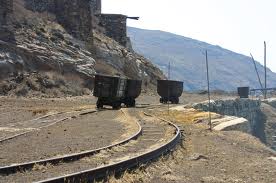
The AFR has some exciting news on the Chinese rebalancing (or lack thereof) project this morning:
China’s top economic planning official said the country was in the process of rapid urbanisation that would drive growth over the next decade, but said manufacturing was having “huge difficulties” due to overcapacity.
National Development and Reform Commission chairman Zhang Ping said on Wednesday a rising number of heavy industries were making losses due to overinvestment in manufacturing.
…“We are in the process of rapid urbanisation,” Mr Zhang told a press conference in Beijing.
“Urbanisation is the biggest potential force driving China’s domestic demand in the years ahead.”
It is estimated that this mass migration over the next decade will require $US6.4 trillion worth of investment. Urban residents make up an estimated 53.4 per cent of China’s population, and this will reach 66 per cent by 2030.
True enough. But under the excitement this is not quite so good. In 1990 China had 26% of its population in cities. It has taken 22 years to move 27% of the population. Accounting for population growth, that’s around 500 million people. The current urban population is a bit north of 700 million using the AFR’s figures, which presumably came from the Chinese (UN and World Bank estimates are lower).
The next seventeen years will see 12.6% more. But population growth has slowed and is expected to be at 1.4 billion in 2030. That means the Chinese have committed to moving upwards of another 200 million or so. And as we know, many cities already have overcapacity and are waiting for the next wave of immigrants.
I happily concede that these figures are pretty hazy but no more so than the arguments for steel use intensity per head used by Australia’s elite to hang the nation’s future upon.
Although still epic, they are not epic enough for Australia, which is expanding its supply capacity in urbanisation commodities at even more spectacular rates (in iron ore its projected to increase from 400 million tonnes in 2011 to above one billion tonnes in 2016).
Yet it is conceivable that China’s current steel-making capacity will be enough to handle all future urbanisation. Perhaps the manufacturing sector with the most grotesque overcapacity in China is steel and consolidation in the sector will not be good for miners either because it means more concentrated bargaining power on the buy side.
Yesterday, FTAlphaville had a much more sober assessment of new Chinese growth goals with which I agree:
China’s National People’s Congress annual plenary began today, with soon-to-be-former premier Wen Jiabao outlining the official economictargets for 2013. We’ve written a few posts lately about how China’s growth has become increasingly driven linked to credit and, particularly, fast-growing shadow finance. More recently, there are signs the authorities are feeling less comfortable with letting shadow finance run riot — but at the same time, its role in fuelling growth makes a big or sudden curtailment look unlikely.
The targets announced today added to signs of discomfort with unchecked credit growth, according to various China watchers.
Here’s a run down of today’s key announcements:
– GDP growth maintained at 7.5 per cent — the same as last year. This was widely expected. The target is usually exceeded.
– A bigger fiscal deficit: 2 per cent of GDP compared to 1.6 per cent of GDP (1.5 per cent targeted) in 2012. This increase isn’t seen as signifying a big change in fiscal planning; Nomura’s Zhiwei Zhang says it partly reflects falling revenues from lagging tax changes.
– A reduced inflation target: CPI target is 3.5 per cent, down from 4 per cent last year. Societe Generale’s Wei Yao says inflation targets “usually mark the trigger point for policy tightening”: in other words, don’t expect loosening if the rate falls below the target. If that’s still the case, she says, lowering the target could indicate a general, growing risk aversion:
… the lowering of the CPI target may indicate that the authorities aim to strike a better balance between growth and risk, with medium-term sustainability higher on the priority than short-term buoyancy. Actually, risks are coming from more places than consumer goods inflation. The 2013 work report was more hawkish on housing inflation and speculation. Preventing systemic financial risk was emphasized as part of the monetary policy objectives. Particularly, the risk associated with banks off-balance-sheet activities was singled out.
In other words, another sign that shadow financing is being to be watched more closely. Which ties in with the next key point:
– Steep curtailment of money growth: the M2 growth target is 13 per cent, compared to 14 per cent last year. In fact this is more dramatic than it seems, says Nomura’s Zhang. For one thing it’s the lowest target rate since 2002. And furthermore, reaching the target would require a big step back from what’s been done so far this year:
M2 growth in January was 15.9%, much higher than the 13% target. We believe the government is starting to become concerned with financial risks from the surges in shadow banking activities during 2012. This reinforces our view that the authorities will tighten monetary policy in 2013.
On the other hand, BofA’s Ting Lu (who has a more bullish China forecast than Zhang) says the M2 target reduction is not very significant, because it’s only a reference rather than a “compulsory requirement”. Loan growth targets and Total Social Financing are more important, says Ting, and the loan growth target is for 14.3 per cent growth. Ting expects TSF, a more complete measure of credit which includes some shadow finance, to continue growing at “a double-digit pace”. It’s worth remembering here, though, that TSF grew at 23 per cent last year.
This, fundamentally, is why the Australian dollar has begun to fall, and will keep doing so.

